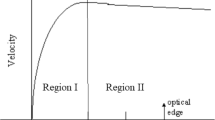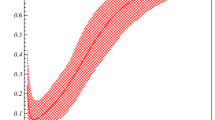Abstract.
It is shown that the cosmological constant links the roots both of General Relativity and Newtonian gravity via the general function satisfying Newton’s theorem according to which the gravitating sphere acts as a point mass situated in its center. The quantitative evidence for this link is given via the correspondence of the current value of the cosmological constant with the value of the cosmological term in the modified Newtonian gravity to explain the dark matter in the galaxies. This approach reveals: a) the nature of dark matter as gravity’s signature, b) the common nature of dark matter and of cosmological constant (dark energy), c) that the dark matter as a consequence of repulsive gravity increasing with the distance ensures the observed higher mass-to-luminosity M/L ratio while moving from the scales of galaxies to galaxy clusters. The galactic halos via non-force-free interaction due to the repulsive \( \Lambda\)-term of gravity determine the features of galactic disks as is supported by observations. The data of galaxy groups of the Hercules-Bootes region are also shown to support the \( \Lambda\)-gravity nature of the dark matter, i.e., the value of the cosmological constant is derived not from cosmological data. Among the consequences of such modified General Relativity is the natural link to AdS/CFT correspondence.
Similar content being viewed by others
References
R.H. Sanders, The dark matter problem (Cambridge University Press, 2010)
T. Clifton, P.G. Ferreira, A. Padilla, C. Skordis, Phys. Rep. 513, 1 (2012)
G. Bertone, D. Hooper, Rev. Mod. Phys. 90, 045002 (2018)
S. Bahamonde, arXiv:1712.03107
A. Einstein, Sitzungsber. K.-Preußi. Akad. Wiss. 142 (1917)
I. Newton, The Principia: Mathematical Principles of Natural Philosophy (1687)
V.G. Gurzadyan, Observatory 105, 42 (1985)
S. Weinberg, Gravitation and Cosmology (John Wiley and Sons, 1972)
M. Nowakowski, Int. J. Mod. Phys. D 10, 649 (2001)
Planck Collaboration (P.A.R. Ade et al.), Astron. Astrophys. 594, A13 (2016)
A.V. Kravtsov, Astrophys. J. Lett. 764, L31 (2013)
L.D. Landau, E.M. Lifshitz, Mechanics (Pergamon Press, 2000)
Y.B. Zeldovich, JETP Lett. 6, 316 (1967)
S. Capozziello et al., JCAP 06, 044 (2017)
I.D. Karachentsev, O.G. Kashibadze, V.E. Karachentseva, Astrophys. Bull. 72, 111 (2017)
I. Ciufolini et al., Eur. Phys. J. C 76, 120 (2016)
L. Heisenberg, S. Tsujikawa, arXiv:1711.09430
V.G. Gurzadyan et al., Astron. Astrophys. 609, A131 (2018)
A.E. Allahverdyan, V.G. Gurzadyan, Phys. Rev. E 93, 052125 (2016)
V.G. Gurzadyan, A. Stepanian, Eur. Phys. J. C 78, 632 (2018)
V.G. Gurzadyan, A. Stepanian, Eur. Phys. J. C 78, 869 (2018)
Author information
Authors and Affiliations
Corresponding author
Rights and permissions
About this article
Cite this article
Gurzadyan, V.G. On the common nature of dark matter and dark energy: Galaxy groups. Eur. Phys. J. Plus 134, 14 (2019). https://doi.org/10.1140/epjp/i2019-12418-4
Received:
Accepted:
Published:
DOI: https://doi.org/10.1140/epjp/i2019-12418-4




